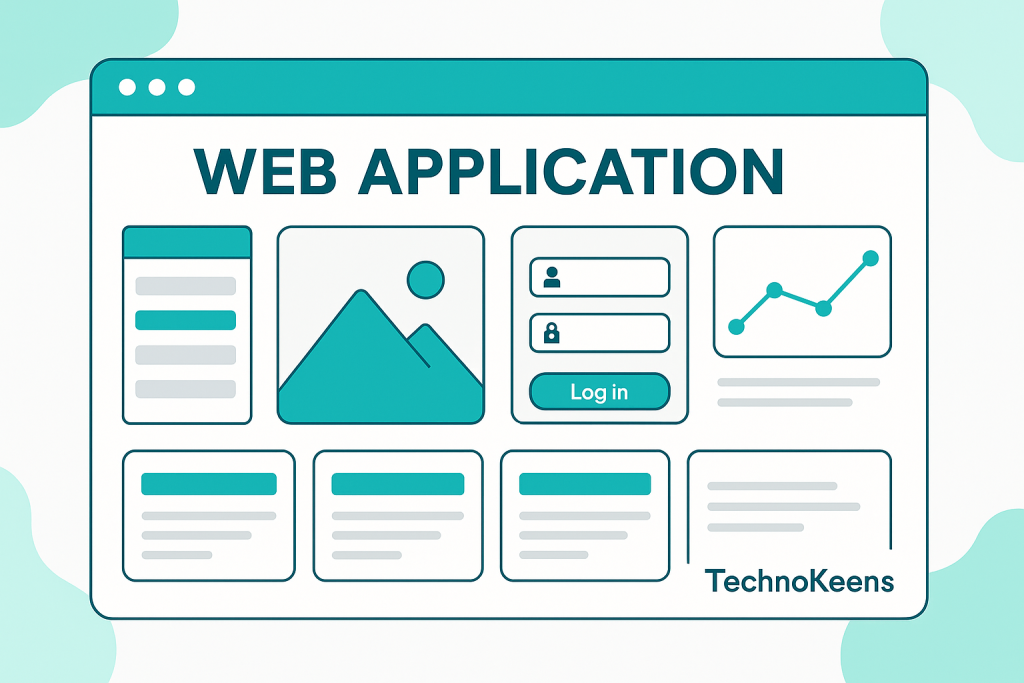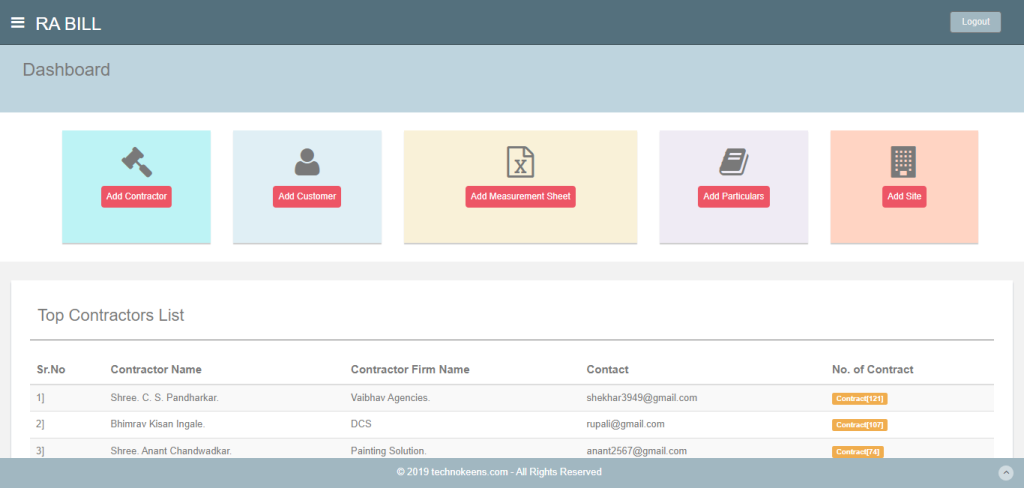Web Application Development
Web Application Development That Powers Your Business
In today’s digital-first world, a high-performing web application can drive efficiency, engagement, and growth. At Technokeens IT Solutions, we develop scalable, secure, and user-centric web applications tailored to your business goals. As a trusted web application development company in India, we focus on functionality, speed, and seamless user experience. Whether it’s automating operations or creating interactive customer platforms, our custom solutions help turn ideas into powerful digital products built to perform, adapt, and scale. From concept to deployment, we bring your web application vision to life with precision and care.
Overview
Why Invest in Web Application Development?
A web application is more than just a website it’s an interactive, dynamic solution designed to improve operational efficiency, enhance user experience, and provide real-time data insights. Technokeens offers end-to-end services, helping businesses digitize processes, integrate third-party systems, and create mobile-responsive, cross-platform solutions.
Our Expertise

Custom Web Application Development Services for Every Industry
Industry-Focused Web Application Development
Every industry operates differently and so should its digital solutions. At Technokeens IT Solutions, we specialize in custom web application development that addresses sector-specific challenges with precision and usability.
Here’s how we’ve empowered businesses across industries:
Healthcare: Simplifying appointment bookings, patient data access, and reporting through intuitive platforms
Retail & FMCG: Streamlining stock control, sales tracking, and supplier coordination with tailored dashboards
Oil & Gas: Enabling real-time asset tracking, safety compliance, and operational monitoring via robust web apps
Construction: Improving field communication, site reporting, and worker management through mobile-friendly systems
We go beyond basic functionality to deliver solutions that are fast, secure, and built around the way your industry truly works. Whether you need a platform to automate manual processes or connect dispersed teams, we’re ready to turn your workflow into a smart, scalable system.
Impact
Full-Stack Development with Real Business Impact
Our experienced team of full-stack developers excels in both frontend and backend technologies, including React, Vue, Node.js, Laravel, and custom PHP frameworks like Laravel and CodeIgniter. We ensure seamless, high-performance applications with responsive designs optimized for usability.

Get Your Website Audit Report Now!
Services
Mobile App Development Integration
Want your web app to extend to mobile? Our mobile app development services ensure seamless integration across devices, delivering a consistent experience with Progressive Web Apps (PWAs) or native iOS/Android apps.
Why Us
Why Choose Technokeens?
When you partner with Technokeens, you get:
- A consultative approach tailored to your needs
- Agile development and rapid iterations
- Clean, secure, and well-documented code
- Ongoing support and maintenance
Proven Success Stories
We’ve helped businesses optimize operations with custom solutions, including a project management system for a U.S. renovation firm and a multilingual e-commerce platform that boosted sales by 40%.

Related Case Studies
Take a look at
these related case studies

Estimate Generator And Management Portal
Government employees, specifically junior engineers, are responsible for creating and managing estimates in an Excel sheet. This process involves using specific formulas for calculations. However, due to the large amount of data and records, searching, deleting, and updating records is a lengthy and time-consuming task.

Student Management System

House Owner Management System

Renovation System Pro
Introducing a comprehensive project management and financial solution for the renovation industry, designed to streamline resource management, predict uncertainties with AI-driven anomaly detection, and facilitate financing through credibility analysis and fintech collaboration, complemented by a simplified and transparent bidding platform for project and property owners

E-Painter

E-Commerce Grocery Store

Taxi Booking App

Investment Advisory Service

E-Tender

ASBD All Star Backdrop
Let’s Build Your Custom Web Solution
Whether you’re a startup or an enterprise, Technokeens is your trusted partner for custom web application development. We combine strategy and execution to build secure, scalable solutions that align with your goals. Let’s discuss your next big idea!
